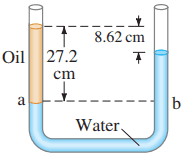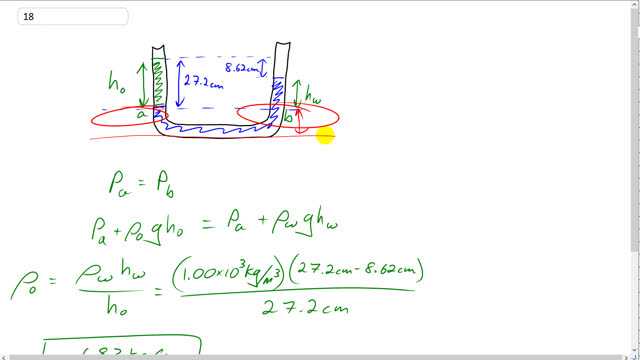
Water and then oil (which don’t mix) are poured into a U-shaped tube, open at both ends. They come to equilibrium as shown in Fig. 10–50. What is the density of the oil? [Hint: Pressures at points a and b are equal. Why?]


In order to watch this solution you need to have a subscription.
This is Giancoli Answers with Mr. Dychko. The pressure at points A and B are going to be the same because that's the same vertical height within the same fluid; they are both within water and they are both the same height above this level here say. And so they have the same pressure and the pressure at point A will be the atmospheric pressure applied on top of the oil column plus the pressure due to the oil so the oil's density times g times the height of the oil and that's gonna equal pressure point B which will be atmospheric pressure applied to the top of it— same atmospheric pressure there— plus the density of water times g times the height of the water. So we can solve for the oil density by subtracting P a from both sides—atmospheric pressure— and divide both sides by g to cancel the g's and then divide both sides by h o— height of the oil— and we get density of oil is density of water times height of the water divided by height of the oil. So the water column height will be the oil height minus this distance from the top of the oil to the top of the water. So that's 27.2 centimeters minus 8.62 centimeters and you can leave it in centimeters because since we are dividing centimeters by centimeters, the units are gonna cancel so there's no need to turn them into meters— the only thing that's important is that they are the same units so that they will cancel— and we end up with 683 kilograms per cubic meter must be the density of oil.
why are we subtracting 8.62 from 27.2?